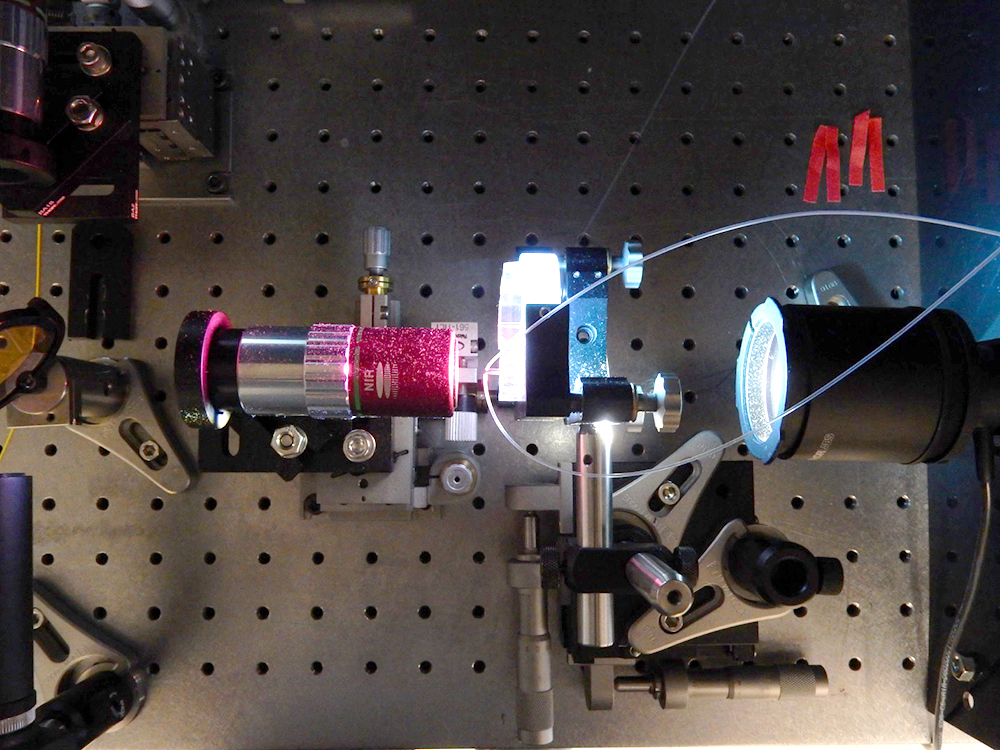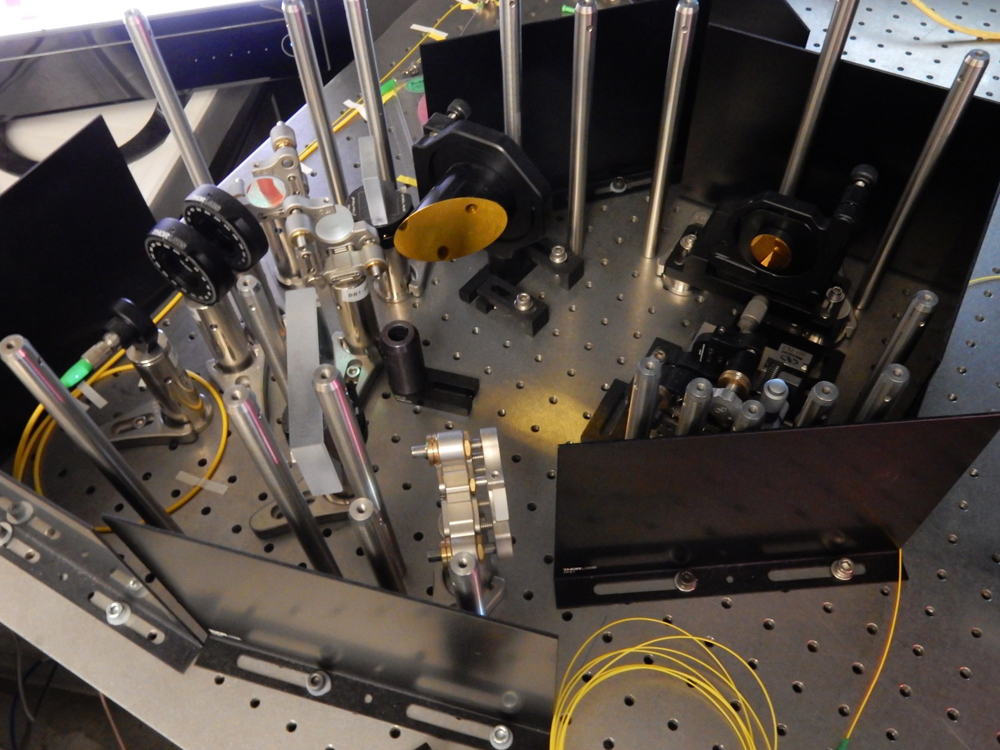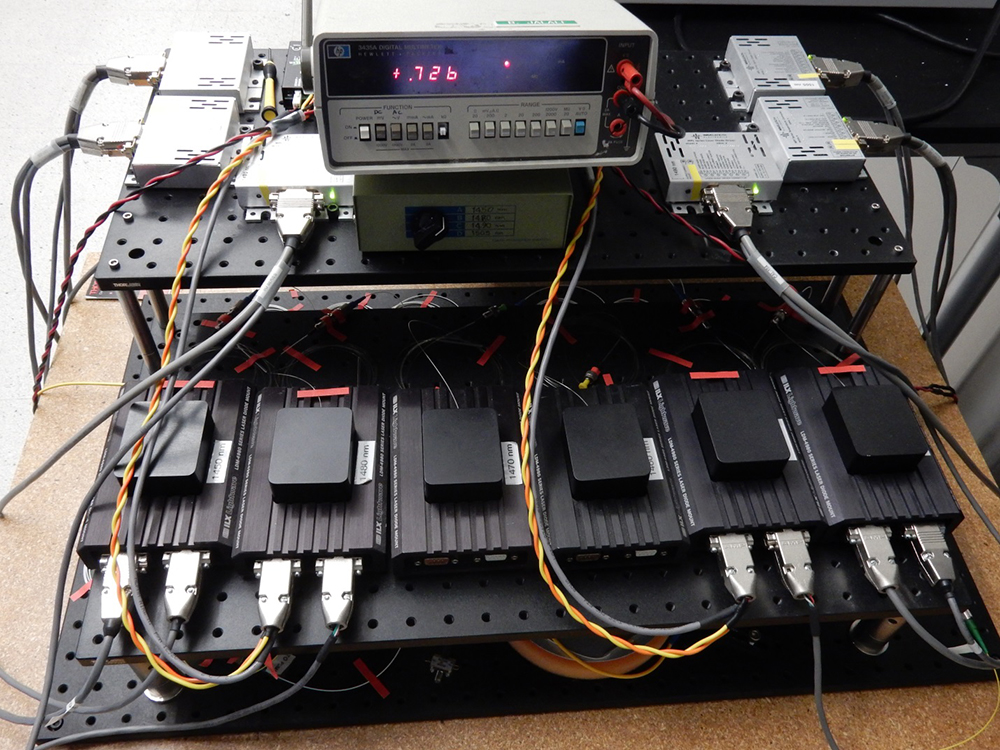Working under Professor Bahram Jalali and with researchers at the California Nano Systems Institute, electrical engineering PhD student Claire Chen and postdoctoral scholar Ata Mahjoubfar achieved the world record for accuracy and speed in identifying label-free cancer cells and other unique biological cells.
Cancer cells can be identified by tagging cells within the blood, but once a cell is tagged it starts behaving differently. In order to avoid this, Professor Jalahi’s team used a label-free classification method in their research.
The team identified cancer cells by using an algorithm to analyzing phase and intensity images of cells. They took millions of pictures of cells and fed them into a computer model for identification. In order to speed up the acquisition of the cell images, they employed a time stretch system. Time stretch technology slows down optical signals and allows for taking up to 36 million pictures per second.

Microscope objective lens and microfluidic channel used to take pictures of the blood cells.

Optics system for time stretch quantitive phase imaging.

Fiber optics used to optically amplify and slow down the pictures of blood cells.
They then used a deep learning algorithm to analyze the millions of pictures in order to identify healthy and cancerous cells. Deep learning is a process by which an algorithm teaches itself how to do something through trial and error. The algorithm uses many different features to analyze cells, such as density and shape, but the researchers did not program it to look for certain traits. Instead it learns on its own what to look for. One common use of deep learning is face recognition on social media.
Chen said that deep learning mimics the brain.
“It is like a kid gaining experience by practicing,” she added.
The best deep learning algorithms are yet to come, Mahjoubfar said. The research team used previously established deep learning algorithms and altered them for medical purposes.
In order to teach the algorithm how to identify the cells, a time stretch camera provided the algorithm with pictures of healthy and cancerous cells which were categorized accordingly. This training phase allowed the algorithm to learn the characteristics of each cell category. Next the researchers provided the algorithm with unlabeled cells and had the algorithm classify them. The algorithm’s responses were graded and through trial and error its responses became more and more accurate. The researchers did not instruct the algorithm how to determine which cells were healthy or cancerous; instead the algorithm altered its method based on its graded results. The completed algorithm has a 96% identification accuracy rate.
Chen, who has recently graduated, worked on the project for three and a half years and Mahjoubfar worked on the project for five years.
“For us it is very rewarding to see our invention is helping patients and medical studies,” Mahjobfar said.
